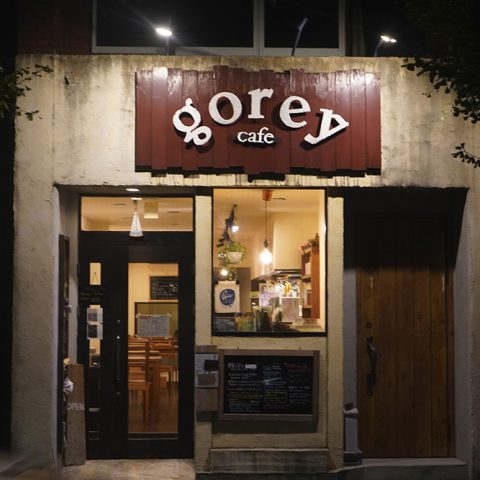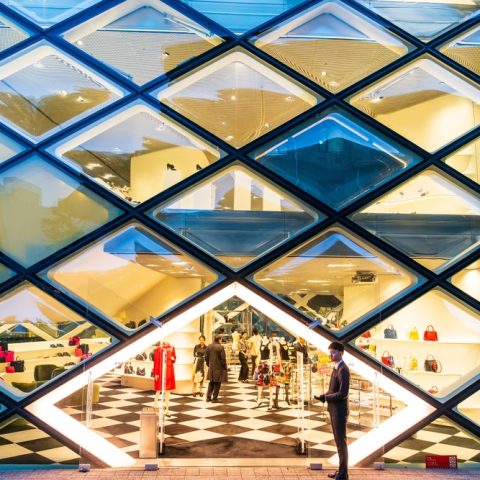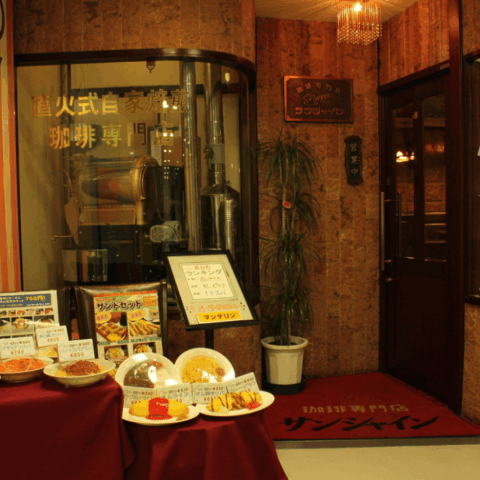
Setsubun
“鬼は外!福は内!” (Oni wa soto! Fuku wa uchi!– Devil out! Fortune in!) This phrase is something that you hear a lot on the day before spring in Japan, known as Setsubun. This year, it will fall on the 3rd of February according to the Japanese lunar calendar.
For centuries, people in Japan have created different traditions to expel evil spirits. For example, in the 13th century, it was a tradition to drive away evil spirits by using smoke from burning sardine heads, by burning wood, and making noise on drums. Another tradition that is not so popular anymore is using fish heads and holy tree leaves to decorate the entrance to one’s home. Nowadays, people throw roasted soybeans inside and outside their homes, and at temples and shrines while shouting “Oni wa Soto! Fuku wa uchi!” Afterwards, everyone must pick the number of beans corresponding to their age and eat them to bring good fortune into their homes.
Here, you will find some events where you can enjoy this fun tradition. Since they will be held in temples all around Tokyo, this will mean lots of “祭り食べ物” (Matsuri Tabemono – Festival foods), making them some of the best occasions to try street food in Japan.

For an extra dose of CUTE- check out this little dude celebrating Setsubun, chasing out the oni and welcoming the good luck!
[vc_video link=”https://youtu.be/zEx9MWk9bZo” align=”center”]
Shimokitazawa 88th Tengu Festival
Tengu are Japanese folklore creatures that are believed to bring prosperity to businesses and good luck in general. These long red-nosed goblins will march on the Shimokitazawa streets for the 88th time while throwing “fukumame” (lucky beans) in the Tenkaichi Tengu Parade. This neighborhood has a particular way of celebrating Setsubun: instead of just commanding the demons to go away, they outright expel them by filling the streets with people dressed as Tengu spirits marching around with a large Tengu mask parade float that is three meters tall and two meters wide.
Tengu are said to listen to people’s wishes for safety and good luck, so it is a good idea to have a look at this festival and receive some of the Tengu’s blessings.
Location
Shimo-kitazawa Station
https://goo.gl/maps/RZ85khZ3Dk7A3tC18
Shimo-kitazawa Ichibangai Shotengai
Setagaya, 2 Chome-37-17 Kitazawa, Setagaya-ku, Tokyo, Tokyo 155-0031
https://goo.gl/maps/qjGo2JiZoXpv75W97
Shinryūji Temple
2 Chome-36-15 Kitazawa, Setagaya City, Tokyo 155-0031
https://goo.gl/maps/5t6rvvuJVZDuC7rx9
Dates
January 31, 20:00-21:00
Crow-billed Tengu visit restaurants to throw beans.
February 1, 14:00-16:00
80 large Tengu throw beans as they march through the streets.
February 2, 2019
Stamp rally: collect stamps to win lucky beans.
Cost
Free

Senso-ji Shrine and Kannon Temple Setsubun Festival, and Dance to Honor the Seven Lucky Spirits
One of the oldest and most spiritual areas in Tokyo is Asakusa Kannon Temple, best known as Senso-ji. This temple hosts Kannon, the goddess of mercy. Thanks to the goddess’s presence on the temple grounds, it is thought that evil spirits are constantly kept at bay. Therefore, instead of the classical “Demons out, Fortune in” chant, people shout “Long life, Fortune in.” In the shopping mall area around the temple, people throw roasted soybeans at demon processions around the temple area, and then from shops and local businesses to the crowd to give them good luck.
Also, a dance presentation is held to honor the Seven Lucky Spirits that are believed to grant good luck. Each one of them brings good fortune in a different field: art, sciences, finance, etc. Celebrities are also invited to join the main stage of the festival, but their identities are not announced until the day of the festival, bringing more surprise and excitement to the visitors.
Location
Sensō-ji
2 Chome-3-1 Asakusa, Taito City, Tokyo 111-0032
https://goo.gl/maps/KRguBDA5iYEPe5bC9
Date
February 3rd, 12:00-17:15
Cost
Free

Daruma Kuyo: Daruma Charm-Burning at Nishi-Arai Daishi Temple
This temple hosts a purifying service in which these special charms are burned. Having a Daruma charm is believed to help you achieve your goals. The idea originated from the Buddhist monk Bodhidarma, who spent 9 years meditating inside a cave without moving. During this time, he lost his limbs, and even cut his eyelids in a desperate attempt avoid falling asleep. It is said that in the cave, you can find the shadow his figure on the rock.
The shape of a Daruma doll is round like an egg, resembling a body without limbs. When you first purchase one, it will not have its eyes painted. You have to first paint the left eye yourself, come up with a goal that you want to achieve, and then place the doll someplace where you will see it every day as a reminder of your goal. Once you fulfill that goal, you then paint in the right eye. The tradition then is to burn the doll to purify the goal and bring good luck on Setsubun, or during a special memorial ritual like the one hosted at Nishi-Arai Daishi Temple. After the dolls are set on fire, monks chant sutras to purify the goals that those charms helped their owners achieve.
There’s also a large area where different festival food is sold at stalls, and “fukumame” (good luck bean) throwing will be held at the nearby shrine.
Location
Nishiarai Daishi Soji-Ji Temple
1 Chome-15-1 Nishiarai, Adachi City, Tokyo 123-0841
https://goo.gl/maps/C8fkeHSmPYUyNapi6
Shusse inari myōjin (出世稲荷明神)
1 Chome-15 Nishiarai, Adachi City, Tokyo 123-0841
https://goo.gl/maps/a1BcyhRnNSeMBejk7
Date
February 3rd, 11:30
Cost
Free

Other interesting locations are:
- Zojoji Temple: right side of Tokyo Tower, one of the most important locations for sumo wrestlers and politicians. This temple is closely related to politics in Japan, so special ceremonies are held to bring fortune to the country’s new year.
Location
Zojoji Temple
4 Chome-7-35 Shibakoen, Minato City, Tokyo 105-0011
https://goo.gl/maps/6MMwfYLJMZ2hmp646
Date
February 3rd, 12:00-13:30
Cost
Free
- Mt. Takao Setsubun: held at the Yakouin Temple. Hundreds of people from locals to singers, sumo wrestlers, actors, etc. will gather here. It is believed that eating the same number of beans as your age will cure illnesses and keep bad luck away throughout the year. Also, a special fire ceremony is held to purify the bean throwers.
Location
Yakuou-in
2177 Takaomachi, Hachioji, Tokyo 193-0844
https://goo.gl/maps/7SDtRqHs5xyKHbNMA
Date
February 3rd, 12:00-13:30
Cost
Free

Plum Blossom Viewing
During one of Tokyo’s favorite seasons, the city gets painted pink and white by plum and cherry blossoms. This season begins with the plum blossoms blooming in early February and continues until late March when the cherry blossom season ends. There are two main locations in the Tokyo area during February where you can enjoy the plum blossoms:
Setagaya Plum Festival
Setagaya is one of Tokyo’s most populated wards despite not being one of the more touristy areas. Is it also home to many recently popular districts like Shimokitazawa, Sangenjaya, and Futako-Tamagawa.
The Plum Festival takes place at Hanegi Park, which is full of blooming plum trees, giving visitors an amazing to behold when taking a walk through the park. During the event, you can enjoy koto (Japanese harp) music, haiku poems classes, and mochi (sticky rice cake) making. And because this is a plum festival, there will be food and beverage stalls selling products that include the fruit, such as yokan jelly (made with red bean paste, agar and sugar), daifuku (rice cake stuffed with red bean paste), plum wine, etc.
Location
Hanegi Park
4 Chome-38-52 Daita, Setagaya City, Tokyo 155-0033
https://goo.gl/maps/7LxhiBf5BW8JYBav6
Date
February 8th – March 1st, 10:00-16:00
Cost
Free

Bunkyo Plum Festival
This festival is one of the five flower festivals in the Bunkyo area, held on the Yushima Tenjin Shrine grounds. Like every flower festival in Japan, you will find night illuminations, shamizen (a three-stringed instrument) performances, traditional dance, tea, and other cultural events. This has been one of the most popular places to do “hanami” (blossom viewing) since the Edo era.
Location
Yushima Tenmangu
3 Chome-30-1 Yushima, Bunkyo City, Tokyo 113-0034
https://goo.gl/maps/w4MZZ1bA2aMdqs8c6
Date
February 8th – March 8th, 08:00-19:30
Cost
Free
Koshikawa Korakuen Gardens
This is one of the oldest parks in Tokyo, a quiet secret garden, where you can find a bunch of plum trees while taking a stroll. Enjoy this calm and relaxing environment while feasting your eyes on the beauty of plum blossoms and taking in the view of the park. After a bit of reflection, it will be prime time to make a stop at Tokyo Dome City and enjoy a nice dinner at one of the many restaurants in the area. Or if you want to try your luck, you can look for the street ramen stall that is sometimes in front of Suidobashi station.
Location
Koishikawa Korakuen Gardens
1 Chome-6-6 Koraku, Bunkyo City, Tokyo 112-0004
https://goo.gl/maps/UJTP7FBvCN5Xv7BN7
Date
February 8th – March 3rd, 09:00-17:00
Cost
¥300

First Day of the Horse and Mochi Making at Asagaya
The Mabashi Inari Shrine was founded on the late Kamakura period around the 14th century, and is located on the southeast side of Asagaya Station. This is a bubbly and mostly quiet neighborhood that has one of the few drinking alleys still left in Tokyo.
In February, people here celebrate the First Day of the Horse by making mochi (sticky rice cake), a most delicious treat. Mochi is made by steaming special glutinous grains of rice and then pounding it on a stone mortar with a wooden mallet. Once the paste is soft enough, it is cut in pieces and covered with sweetened soybean powder, white sugar, or filled with red bean paste and covered in rice flour. The mochi is then blessed at the temple by priests and offered to visitors to bring good luck and prosperity to their lives.
This culinary method is really fun to try and also interesting to watch since the most skilled mochi makers are quick to pound the dough while another person flips it to have even texture. As an extra, assistants to the event can try “amazake,” a fermented low-alcoholic sweet rice wine that is traditionally served hot during winter, especially on New Year’s Day at temples and shrines. It is believed to be very nutritious, containing vitamins B1, B2, B6, folic acid, dietary fiber, oligosaccharide, cysteine, arginine, and glutamine.
Location
Mabashi Inari Shrine
2 Chome-4-4 Asagayaminami, Suginami City, Tokyo 166-0004
https://goo.gl/maps/gWdxW82vqtEKUaPg8
Date
February 9th
Moochi-making: 10:00-11:30
Distribution of red and white mochi: 15:00-15:30
Cost
Free

Sakana & Japan Festival at Yoyogi Park
Washoku (Japanese cuisine) was recognized as a UNESCO Intangible Cultural Heritage in 2013. This unique food culture makes good use of the “umami” (savory taste) produced by Japan’s unique seafood such as kelp, and has attracted much attention from around the world. However, domestic fish and shellfish consumption rates have been declining over the past decade, even at home dining tables. So this created the need to promote local and traditional seafood dishes.
Sankei Shimbun, a company that runs SAKANA & JAPAN PROJECT, is working with culinary expert Masaharu Takimura to promote fish consumption at Japanese dining tables. The word “sakana” means fish in Japanese.
Takimura has been working with different food associations and created one of his own to encourage fathers to be more present in daily family life by cooking together with their children. The Ambassador Dad Fish Cooking project aims to promote seafood plates among the household’s meals by inviting dads to cook one fish-based dish every week for their family, all with the help of a website that gives them easy recipes.
This event is a big push to promote seafood dishes from all over the country and encourage locals and visitors alike to challenge themselves and give one of the most important parts of washoku a try. During this 3-day period, you will find all sorts of food stalls at Yoyogi Park from top gourmet food to very simple and homie dishes. Entry to the park is free, so you can pass by and see if you’ll find something to satisfy your palate, which you most likely will.
Location
Yoyogi Park Event Square
2 Chome-3 Jinnan, Shibuya City, Tokyo 150-0041
https://goo.gl/maps/Qqsq2roUUYKpkAxD9
Dates
February 28th, 11:00-20:00
February 29th, 10:00-20:00
March 1st, 10:00-18:00
Cost
Free
Extra! Extra! Themed Cafes on Their Last Few Weeks!!!
Japan is great at creating very specialized experiences that you can’t find anywhere else, one of the most iconic ones being themed cafes. From cartoons, anime, books, animals, etc., every aspect of these cafes follows a specific theme. This includes the food shaped in absolutely fun and interesting ways that bring out the most iconic traits of your favorite character right on your food plate. You can also find and purchase exclusive merchandise at these cafes, so keep some extra money handy to go crazy with this and get into the full-on fan spirit!

Star Wars Cafe
Following the release of “Star Wars: The Rise of Skywalker,” this themed cafe opened at the beginning of January and will continue until the end of February. The menu is inspired by the characters of the latest chapter of the saga, from food to drinks and everything in between! In addition to Tokyo, the cafe is will open in Osaka, Nagoya, and more cities, so be sure check their website for the dates and locations if you won’t be able to go to the Tokyo cafe.
Location
OH MY CAFE TOKYO (Tokyu Plaza Omotesando Harajuku Store)
4 Chome-30-3 Jingumae, Shibuya City, Tokyo 150-0001
https://goo.gl/maps/WfxF2HMpJn3vGEji7
Date
January 18th – February 23rd
Cost
Food and Drinks ranges ¥600 – ¥2000
Advance Reservation ¥660

Sailor Moon Cafe
“Fighting evil by moonlight, winning love by daylight, never running from a real fight, she is the one named Sailor Moon!”
One of the most beloved anime series of all time will have its own themed cafe for a limited time. Make sure not to miss out on its exclusive treats, drinks, and goods! The “Girls Night Out: Sailor Moon Cafe 2019” at Tokyo Box Cafe & Space Omotesando Store will indulge the girls favorite the Japanese anime with delicious dishes and drinks inspired by the signature colors and symbols for each character.
Other cities in Japan had similar venues that have already ended, but this cafe in Tokyo will be the last one, so if you’re a fan, you can’t miss this chance!
Location
Tokyo Box Cafe & Space Omotesando Store
Pine Under Flat B1F, 5 Chome-13-2 Jingumae, Shibuya City, Tokyo 150-0001
https://goo.gl/maps/gsKwF1s6s17zpbKZ7
Date
January 17th – March 1st, 11:00 – 21:30
Cost
Food and drink cost range ¥900 – ¥2000
Advance reservation ¥715
If you made it to this point, THANK YOU FOR READING THIS BLOG! I hope you can attend all of these amazing events and have an enjoyable time in Japan. Check out the rest of Arigato Japan Food Tour’s website for more fun things to do, and our Instagram Account for amazing photos and videos of Japan and of course food!
Until the next blog post, I wish you a lot of delicious memories!
PIN THIS FOR LATER




